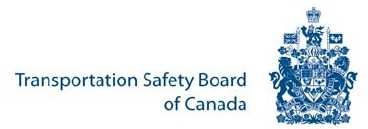Fri, Dec 11, 2009
Canadian Transportation Board Says Plane Was Overloaded, Other
Factors Involved
 The Canadian Transportation Safety
Board has released its final report in an accident that occurred in
March, 2008 that claimed the lives of the pilot and four passengers
on the plane.
The Canadian Transportation Safety
Board has released its final report in an accident that occurred in
March, 2008 that claimed the lives of the pilot and four passengers
on the plane.
The pilot, Regan Williams, was the president of A.D. Williams
Engineering, which owned the plane. He held an instrument rating
and had about 2,200 hours in his logbook, of which 987 hours were
in the PA-46-310P model and 166 hours were in the aircraft he was
flying at the time of the accident.
The investigation centered on a mechanical gyro, which Williams
had had examined prior to the flight. According to the TSB report,
'He had the KI256 and the associated KC192 autopilot computer
removed and bench tested before the occurrence flight. The KI256
signal outputs to the autopilot computer were found to be too
unstable (jittery) to adjust, and the rotor bearings were noisy
when operating. An overhaul was recommended but could not be
performed until the following week, and a replacement or exchange
instrument was not available. Because the KI256 display appeared to
be within bench test parameters, the pilot requested that the units
be reinstalled to complete the occurrence flight before further
repairs were completed, with the knowledge that the autopilot
problems had not been rectified. Section 1.1.1 of Appendix A of the
COM stated “Autopilot must be serviceable for planned single
pilot operations.”
TSB examination of the KI256 gyro/horizon revealed significant
internal wear and damage that pre-dated the occurrence:
- The rotor bearings and shaft had excessive wear and fretting
damage.
- The gimbal roll shaft had considerable fretting damage.

PA46 File Photo
Paint transfer from the rotor to the housing at impact did not
exhibit smearing, indicating that the rotor was stationary at the
time of impact.
While the gyro seemed to be a principal factor in the accident,
TSB listed several causes and contributing factors. Among them:
- The gyro/horizon failed due to excessive wear on bearings and
other components, resulting from a lack of maintenance and due to a
vacuum system that was possibly not at minimum operating
requirements for the instrument.
- The gyro/horizon was reinstalled into the aircraft to complete
the occurrence flight without the benefit of the recommended
overhaul.
- The autopilot became unusable when the attitude information
from the gyro/horizon was disrupted.
- The pilot had not practised partial panel instrument flying for
a number of years, was not able to transition to a partial panel
situation, and lost control of the aircraft while flying in
instrument meteorological conditions.
- The aircraft was loaded in excess of its certified gross weight
and had a center of gravity (C of G) that exceeded its aft limit.
These two factors made the aircraft more difficult to handle due to
an increase of the aircraft’s pitch control sensitivity and a
reduction of longitudinal stability.
- The structural limitations of the aircraft were exceeded during
the uncontrolled descent; this resulted in the in-flight
breakup.
- There were a number of deficiencies with the company’s
safety management system (SMS), in which the hazards should have
been identified and the associated risks mitigated.
The Edmundton Journal reports that the accident happened five
months to the day after another crash that killed the founder of
the company, Arlen Williams.
More News
Runway Lead-in Light System Runway Lead-in Light System Consists of one or more series of flashing lights installed at or near ground level that provides positive visual guidance a>[...]
Aero Linx: Aviation Without Borders Aviation Without Borders uses its aviation expertise, contacts and partnerships to enable support for children and their families – at hom>[...]
Dave Juwel's Aviation Marketing Stories ITBOA BNITBOB ... what does that mean? It's not gibberish, it's a lengthy acronym for "In The Business Of Aviation ... But Not In The Busine>[...]
From 2010 (YouTube Version): Yeah.... This IS A Really Cool Job When ANN's Nathan Cremisino took over the lead of our Aero-TV teams, he knew he was in for some extra work and a lot>[...]
Also: Junkers A50 Heritage, Montaer Grows, Dynon-Advance Flight Systems, Vans' Latest Officially, the Carbon Cub UL and Rotax 916 iS is now in its 'market survey development phase'>[...]
 ANN's Daily Aero-Term (04.24.24): Runway Lead-in Light System
ANN's Daily Aero-Term (04.24.24): Runway Lead-in Light System ANN's Daily Aero-Linx (04.24.24)
ANN's Daily Aero-Linx (04.24.24) Aero-FAQ: Dave Juwel's Aviation Marketing Stories -- ITBOA BNITBOB
Aero-FAQ: Dave Juwel's Aviation Marketing Stories -- ITBOA BNITBOB Classic Aero-TV: Best Seat in The House -- 'Inside' The AeroShell Aerobatic Team
Classic Aero-TV: Best Seat in The House -- 'Inside' The AeroShell Aerobatic Team Airborne Affordable Flyers 04.18.24: CarbonCub UL, Fisher, Affordable Flyer Expo
Airborne Affordable Flyers 04.18.24: CarbonCub UL, Fisher, Affordable Flyer Expo




